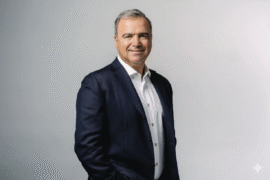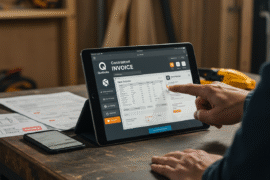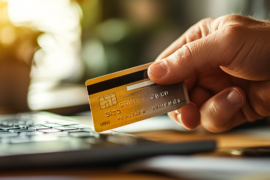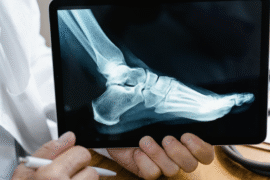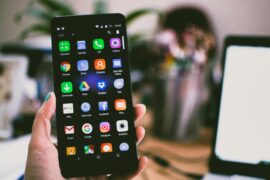This article may contain references to products or services from one or more of our advertisers or partners. We may receive compensation when you click on links to those products or services. Nonetheless, our opinions are our own.
The information presented in this article is accurate to the best of our knowledge at the time of publication. However, information is subject to change, and no guarantees are made about the continued accuracy or completeness of this content after its publication date.
Knowing Income and Expenses
Analyzing personal finances begins with a clear picture of both income and expenses. Without knowing where funds come from or where they go, planning becomes impossible.
Income Sources Checklist
| Income Type | Examples |
|---|---|
| Primary Income | Salary, hourly wages |
| Secondary Income | Freelance projects, part-time jobs |
| Passive Income | Dividends, rental income, royalties |
| Government Benefits | Social Security, unemployment assistance |
Expense Categories
Fixed Expenses: Rent or mortgage, insurance premiums, car payments.
Variable Expenses: Groceries, utility bills, transportation, entertainment.
Periodic Expenses: Annual memberships, car registration fees, holiday gifts.
Monarch Money and Copilot Money have emerged as popular budgeting apps, offering real-time bank syncing, automatic categorization, and AI-powered spending insights.
Expense tracking spreadsheets can still be effective for those preferring manual oversight.
Knowing these categories provides a foundation for creating a realistic budget.
Creating a Practical Budget
A budget acts as a financial blueprint, offering clarity and control over spending and saving. The 50/30/20 rule remains a popular guideline:
| Category | Percentage | Examples |
|---|---|---|
| Needs | 50% | Rent, utilities, groceries, transportation |
| Wants | 30% | Dining out, entertainment, hobbies |
| Savings & Debt Repayment | 20% | Emergency fund, investments, loan payments |
Budgeting Tips
- Set achievable monthly and yearly financial goals.
- Review the budget monthly and adjust to changing income or expenses.
- Include irregular expenses in planning to avoid surprises.
Building an Emergency Fund
Unexpected events, such as medical emergencies or car repairs, can destabilize finances without a safety net. Financial experts continue to recommend saving three to six months of essential living expenses.
Steps for Building an Emergency Fund
- Determine essential monthly expenses.
- Multiply by 3–6 for the target savings goal.
- Open a high-yield savings account (the current average APY for online banks is around 4.00% in 2025).
- Automate contributions directly from the paycheck or checking account.
Even a starting emergency fund of $500–$1,000 can prevent minor crises from becoming major setbacks.
Cutting Unnecessary Expenses
Evaluating current spending habits helps reduce waste and redirect money towards financial goals.
Common Expenses to Review
- Streaming subscriptions no longer used
- Premium cable packages
- Frequent food delivery orders
- Name-brand products when generic alternatives suffice
Negotiation Opportunities
- Internet, phone, and insurance providers often provide lower rates upon request
- Credit card interest rates can sometimes be reduced by calling customer service
Trimming unnecessary costs does not require sacrificing comfort; it means aligning spending with values and priorities.
Voted "Best Overall Budgeting App" by Forbes and WSJ
Monarch Money helps you budget, track spending, set goals, and plan your financial future—all in one app.
Get 50% OFF your first year with code MONARCHVIP
Increasing Income Sources
Enhancing earnings helps accelerate savings, reduce debt, and relieve financial pressure.
Side Hustle Ideas in 2025
- Freelancing on updated platforms like Upwork or Contra
- Delivery services for groceries or local shops
- Online tutoring through services like Outschool or Wyzant
- Selling digital products on Etsy or Gumroad
Professional Strategies
- Requesting a raise after demonstrating value through documented accomplishments
- Pursuing certifications in high-demand fields like AI literacy, project management, or data analytics
Higher income combined with responsible budgeting accelerates the path to financial freedom.
Setting Financial Goals
Clear goals create motivation and a roadmap for progress.
| Goal Type | Time Frame | Examples |
|---|---|---|
| Short-term | 1 year or less | Paying off a credit card balance, building $1,000 emergency fund |
| Medium-term | 1–5 years | Saving for a car, vacation, or educational program |
| Long-term | 5+ years | Purchasing a home, retirement planning, college fund for children |
Financial goals provide a measurable way to track progress and adjust strategies.
Recommended Apps (2025)
- Monarch Money: Comprehensive budgeting with household-wide sharing
- Rocket Money: Automates bill negotiation and subscription tracking
- Robinhood or Fidelity: Enable investing in stocks, ETFs, and fractional shares with low minimums
- YNAB (You Need a Budget): Encourages proactive budgeting by assigning every dollar a job
Leveraging these tools saves time, improves accuracy, and makes tracking easier.
Re-Evaluating Financial Plans
Life changes like a new job, relocation, or family additions can impact financial plans.
Best Practices
- Monthly mini-reviews of income and spending
- Annual deep dives to revisit goals and overall financial health
- Adjust budgets to account for shifts in lifestyle, inflation, or income
Regular evaluations ensure strategies remain relevant and effective.
What Comes Next After Living Paycheck to Paycheck
To get out of the paycheck-to-paycheck cycle, you need to take several steps. Long-term stability starts with knowing how much money you have, making a budget that works, saving for emergencies, cutting back on unnecessary spending, finding more ways to make money, and setting clear goals. Using modern tools and committing to getting regular financial checkups helps keep things moving.
You don’t become financially independent overnight; it takes a lot of small, planned choices over time. Taking charge of your money instead of letting it control your life is what gives you power. Anyone can go from being stressed about money to feeling secure, enjoy the benefits of hard work, and build a strong future by using these strategies.
Frequently Asked Questions
What is the 50/30/20 rule?
It’s a budgeting guideline that allocates 50% of income to needs, 30% to wants, and 20% to savings or debt repayment. This rule is popular because it offers a simple way to organize finances. It helps balance essential spending with discretionary choices. Over time, this structure encourages both short-term enjoyment and long-term savings.
How much should an emergency fund contain?
Experts recommend saving between three and six months’ worth of essential expenses. This amount provides a safety net in case of sudden income loss or unexpected costs. For those starting out, a $500–$1,000 fund is a realistic goal. Once that’s built, contributions can be increased gradually to reach the full target.
What tools can help manage money?
Popular 2025 tools like monarch money, rocket money, and ynab assist with tracking, automation, and savings strategies. Each offers features such as expense categorization, financial goal setting, and real-time updates. Some also negotiate bills or suggest better deals. Choosing the right tool depends on your comfort level with technology and financial complexity.
How often should financial goals be reviewed?
Monthly check-ins help stay aware of income and spending, while annual reviews allow for deeper planning. These reviews ensure financial goals remain realistic and aligned with your life. If income changes or unexpected costs arise, updates can be made immediately. This keeps momentum strong and improves long-term financial outcomes.
What are effective ways to increase income?
Freelancing, monetizing hobbies, and pursuing raises or promotions are common methods. In 2025, digital platforms have made side hustles more accessible. Developing in-demand skills, like project management or data analysis, can lead to higher pay. Increasing income provides more room for saving and investing.
How can unnecessary expenses be identified?
Regular expense tracking reveals unused subscriptions, overpriced plans, and impulse buys. Reviewing bank statements and using budgeting apps helps spot patterns. Canceling or replacing those items with better alternatives saves money. This step is key for anyone trying to save more without earning more.
Why is it important to automate savings?
Automation ensures savings happen regularly and without delay. When money is transferred automatically, there’s no temptation to spend it. It also makes long-term saving feel effortless. Even small automated amounts build up significantly over tim

Reviewed and edited by Albert Fang.
See a typo or want to suggest an edit/revision to the content? Use the contact us form to provide feedback.
At FangWallet, we value editorial integrity and open collaboration in curating quality content for readers to enjoy. Much appreciated for the assist.
Did you like our article and find it insightful? We encourage sharing the article link with family and friends to benefit as well - better yet, sharing on social media. Thank you for the support! 🍉
Article Title: Ways to Stop Living Paycheck to Paycheck
https://fangwallet.com/2025/07/04/ways-to-stop-living-paycheck-to-paycheck/The FangWallet Promise
FangWallet is an editorially independent resource - founded on breaking down challenging financial concepts for anyone to understand since 2014. While we adhere to editorial integrity, note that this post may contain references to products from our partners.
The FangWallet promise is always to have your best interest in mind and be transparent and honest about the financial picture.
Become an Insider

Subscribe to get a free daily budget planner printable to help get your money on track!
Make passive money the right way. No spam.
Editorial Disclaimer: The editorial content on this page is not provided by any of the companies mentioned. The opinions expressed here are the author's alone.
The content of this website is for informational purposes only and does not represent investment advice, or an offer or solicitation to buy or sell any security, investment, or product. Investors are encouraged to do their own due diligence, and, if necessary, consult professional advising before making any investment decisions. Investing involves a high degree of risk, and financial losses may occur including the potential loss of principal.
Source Citation References:
+ Inspo
There are no additional citations or references to note for this article at this time.













